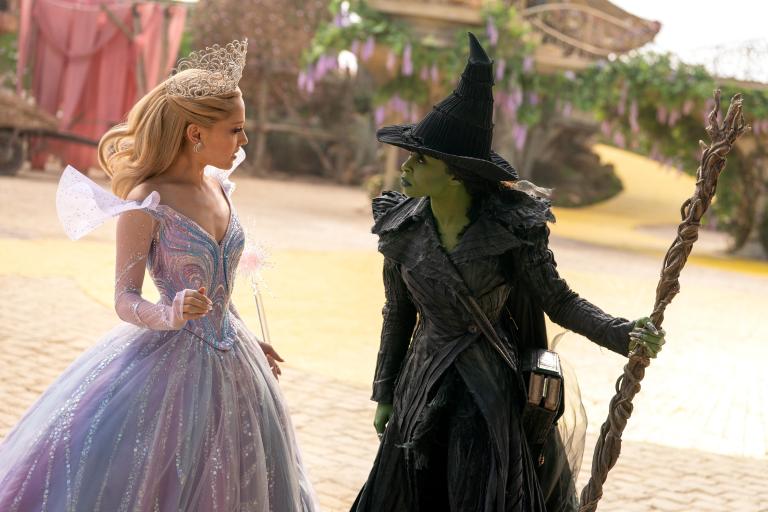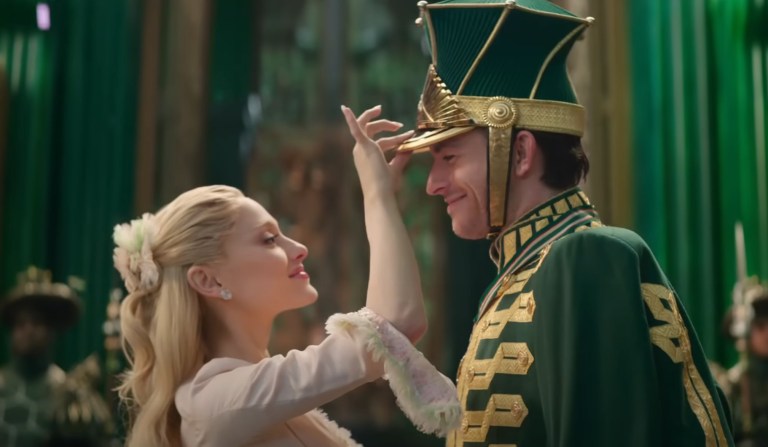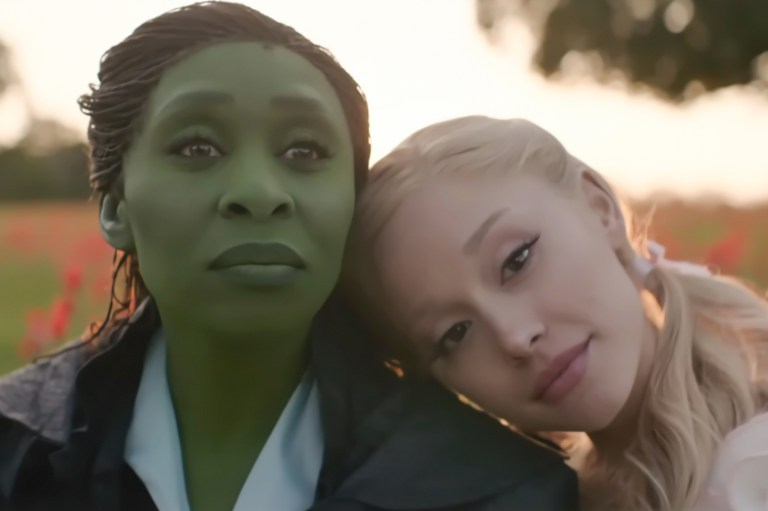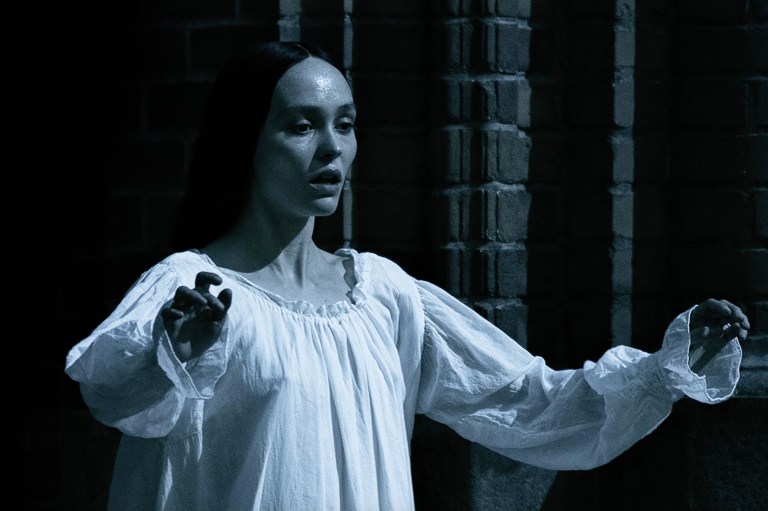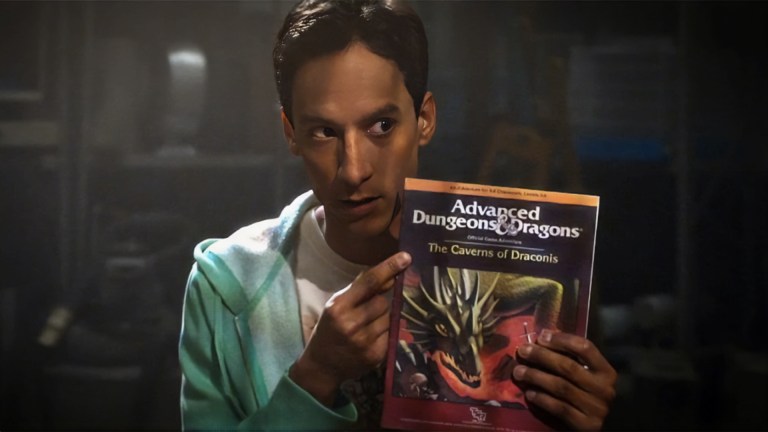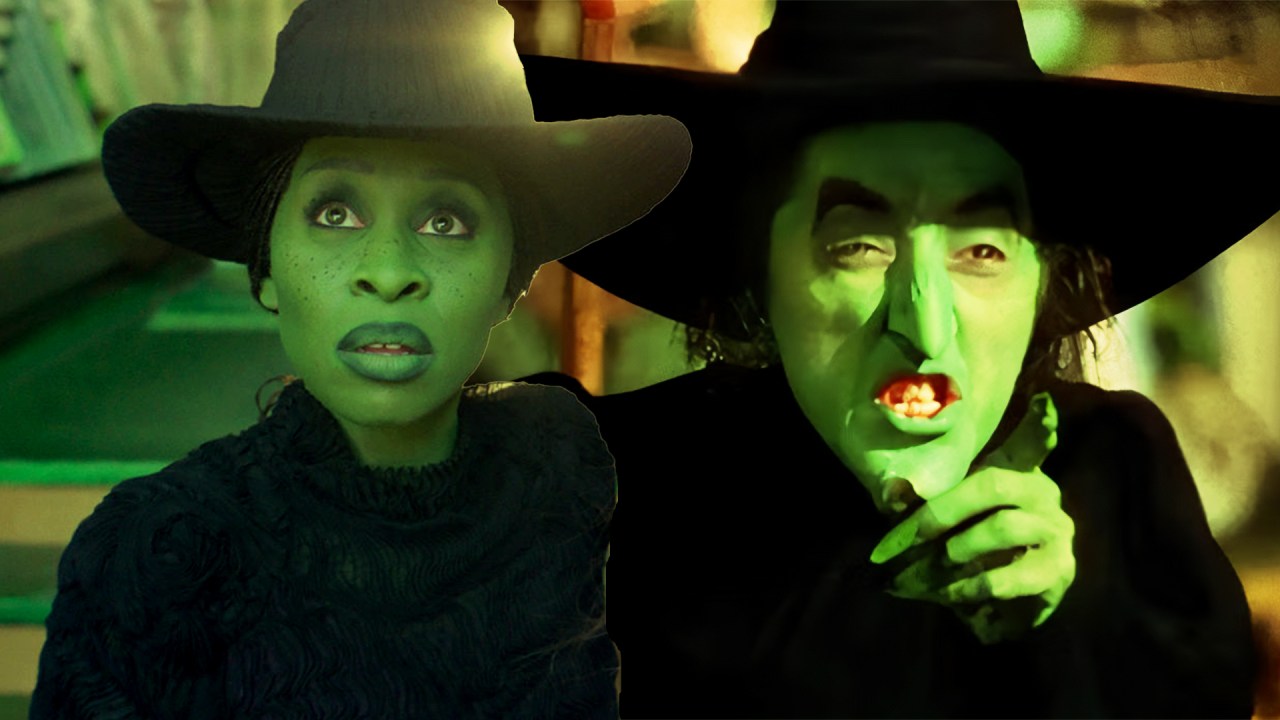
All The ‘Wizard Of Oz’ Easter Eggs You Missed In ‘Wicked’
For anyone who was a fan of Wicked before the Universal film came out, it’s easy to forget that it was tied to a much more well-known story in The Wizard of Oz.
The musical Wicked may be based on the book by Gregory Maguire, but the book itself was written as a prequel to L. Frank Baum’s The Wizard of Oz from 1900. That book was then adapted into the 1939 film almost everyone has seen at least once, with Judy Garland’s “Somewhere Over the Rainbow” transcending the film into mainstream cultural prominence.
As a musical and a book, Wicked did plenty to pay homage to its predecessors. In fact, the entire second act pulls together Wizard of Oz references in a clever way that any fan could appreciate. But the movie has the advantage of being a movie, the same medium as the 1939 film, and therefore it’s able to hide easter eggs throughout as a tribute to the story it’s based on. In this way, Wicked, Part I truly feels like a prequel to the film, even if it’s been modernized to fit today’s film standards. So we’ve uncovered all (or almost all) of the Wizard of Oz easter eggs in Wicked, Part I.
Shifting from Black and White to Color
One of the most significant aspects of the 1939 film was that it was the first film in color. To mark this special occasion, it starts in black and white, but when Dorothy lands in Oz, it shifts to color. To pay homage, the Universal logo for Wicked is in black and white before the film begins in color.
Musical Themes
From the offset of Wicked’s overture, there are musical references to Wizard of Oz. Of course, this all began with Stephen Schwarz’s initial score for the musical, with “Somewhere Over the Rainbow” referenced in the melody of the “Unlimited” musical theme heard in The Wizard and I, Defying Gravity, and in Act II in For Good. However, there are even more of these references in the Wicked film; for instance, notes of “Ding Dong the Witch Is Dead” are heard in the film’s overture leading into “No One Mourns the Wicked.” The songs are also parallels of one another thematically, which is fitting. Later in the film, musical motifs from the Poppies song, the “Merry Ole Land of Oz,” and “Follow the Yellow Brick Road” are sprinkled throughout.
The Title Card
One of the most obvious easter eggs to a Wizard of Oz fan is the Wicked title card, which appears just after the opening number of “No One Mourns the Wicked.” The font is a replica of Wizard of Oz’s title card font, showing us that director Jon M. Chu is very consciously making decisions to pay respect to the 1939 film.
Elphaba’s Name
This easter egg comes from the 1995 novel, but that doesn’t make it any less important. Elphaba seems like an odd name, but it’s actually a combination of letters and sounds inspired by The Wizard of Oz’s L. Frank Baum. His initials are L-F-B, which inspired the phonetics of Elphaba’s name.
The “Wanted” Posters in Munchkinland
Throughout Munchkinland in the opening scene, there are posters of Elphaba as a Wicked Witch on a “Wanted” poster. The font and design of the posters is the same as the design of the 1939 film’s posters.
Nessa’s Socks and Jeweled Slippers (and Ruby Slippers)
In the flashback to Nessa and Elphaba’s childhood, she’s wearing striped socks, hinting at her future as the Wicked Witch of the East. As she arrives at Shiz, her father gives her jeweled slippers (that will inevitable become the ruby slippers). The design of the slippers, however, is a visual reference to the tornado that causes the events of The Wizard of Oz. Later in the film during “Popular,” Galinda pulls out a pair of ruby slippers that are a clear easter egg. Not only does she quickly offer them to Elphaba, but she subtly clicks them three times, just as Dorothy is told to do to get home from Oz.
Multiple References to Miss Gulch
Miss Coddle is the head Shiztress whose responsibility it is to organize the dormitories. When Elphaba says that she is the “other sister,” Miss Coddle replies that her presence is just a “slight gulch,” an Ozified phrase for a “slight hiccup.” Later in the film, after Elphaba and Fiyero free the lion cub, they put him in a bicycle basket as they bike to the forest. This is similar to when Miss Gulch takes Toto from Dorothy and puts him in her bicycle basket.
Bluebirds Fly Over the Rainbow
In one of the most famous lyrics of “Somewhere Over the Rainbow,” Dorothy sings, “If happy little bluebirds fly over the rainbow, why oh why can’t I?” While “Somewhere Over the Rainbow” is her “I wish” song, a classic staple of any musical in which the protagonist shares their deepest desires through song, “The Wizard and I” is Elphaba’s “I wish” song. After she sings the song, bluebirds can be seen flying over the rainbow in the distance.
The Appearance of the Animals
While the CGI animals are a point of contention for many Wicked viewers, they were designed specifically to resemble the W.W. Denslow illustrations in the original Wizard of Oz novel.
The Chickens in the Ozdust Ballroom
Director Jon M. Chu has shared that there is much more behind the making of Wicked than any of us could have guessed. In an interview with RadioTimes.com, he shared: “Before [Baum] wrote Wizard of Oz, he bred show chickens, these sort of fancy chickens. So we used fancy chickens playing the piano, this kind of weird Ozian piano in the Ozdust Ballroom.”
The Sleeping Poppies
Early on in the film, the poppy flowers are referenced as a common shared love between Dr. Dillamond and Elphaba. After she brings him poppies and he’s removed from the classroom, Elphaba accidentally enchants the poppies to put everyone to sleep. This is a call back to The Wizard of Oz (or perhaps a piece of inspiration for Elphaba’s future) in which the Wicked Witch enchants the poppy field to put Dorothy and her friends to sleep.
Characters Paying Homage to Their Predecessors
Many know that Fiyero and Boq don’t remain as themselves in the second part of Wicked. Without giving it away, much of their physicality throughout the film, from Boq’s swing of his gavel to Fiyero leaning with arms wide open nods to their futures. Cynthia Erivo has also shared that Elphaba’s nails in Wicked are actually a reference to Margaret Hamilton (the original Wicked Witch of the West)’s nails from The Wizard of Oz. Galinda’s bubble and wand are of course emblematic of the character, and she places the handkerchief on Boq’s heart as a nod to his future.
The Idea of “Proving Oneself”
In Wicked, Madame Morrible makes it very clear that Elphaba must “prove herself” to the Wizard. However, this idea started back in Wizard of Oz, when Dorothy was told by the Wizard to prove herself worthy of his “magic.”
The Mustache Man
While it may seem on paper that the Mustache Man is just a cute observation from Ariana Grande’s Galinda, he is also a bit of an easter egg. In the 1939 film, the same actor, Frank Morgan, wore different mustaches to play the Wizard, the gatekeeper, the guard, and the coachman. In Wicked, the mustache man is essentially the coachman, while the gatekeeper/guard is composer Stephen Schwarz in a mustache, and the Wizard played by Jeff Goldblum here also has a mustache!
The Emerald City
From its design to the activities within the Emerald City, every little bit has a hint of Wizard of Oz magic. When Glinda and Elphaba get manicures, this harkens back to Dorothy’s makeover during “Merry Ole Land of Oz.” In addition, some of the fashion in Emerald City is almost a direct replica of the fashion in the original film.
The Wizard’s Introduction
Naturally, the Wizard has to scare his guests. In the 1939 film, a projection and blasts of fireballs are used to introduce the larger-than-life figure. In Wicked, Part I, he uses an animatronic head (like in the staged musical) in addition to the fireballs.
The Yellow Brick Road
When the Wizard meets Glinda and Elphaba, he shows him his miniature replica of Oz, complete with his new “brick road.” He says that people will say to “follow the road,” which would later inspire The Wizard of Oz’s “Follow the Yellow Brick Road.” Of course, it wouldn’t become “yellow brick” without Glinda’s input. (Bonus: Glinda’s emphasis on fashion and appearances pay off when she ends up responsible for Elphaba’s emblematic “Wicked Witch” wardrobe — mainly, her hat and her cape.)
The “Man Behind the Curtain”
In The Wizard of Oz, the Wizard is also known as the “man behind the curtain.” As a nod to this, Jeff Goldblum’s Wizard does a shadow dance behind a curtain in his miniature display of Oz, becoming a man behind a curtain. But this easter egg serves a double purpose — it is also a reference to how Elphaba’s conception is shown in the musical Wicked, with a shadow dance behind a curtain. But we won’t say why that’s significant … no spoilers!
The Hot Air Balloons and Signage
As Elphaba tries to escape Emerald City, she first attempts to float off in a hot air balloon, which is exactly how Dorothy tries to leave Oz to go home. Like Dorothy, Elphaba doesn’t escape using the hot air balloon, even though that’s the Wizard’s only way of travel. Instead, she uses the magic of her broomstick, while Dorothy uses the magic of the ruby slippers.
